ARA-290 16mg
ARA-290 16mg
ARA-290 provides long-term neuropathic pain relief, reduces inflammation, promotes tissue protection and repair, and improves metabolic control in diabetic patients.(PMID: 24529189, PMID: 36046815 , PMID: 26774587, PMID: 25387363 )
ARA-290 Research Topics:
-
Neuropathic Pain Relief:
ARA-290 has been shown to provide long-term relief from neuropathic pain by reducing allodynia (pain from normally non-painful stimuli) and improving sensory and motor functions. This is particularly beneficial for conditions like sarcoidosis-associated small fiber neuropathy and diabetic neuropathy. (PMID: 24529189)
-
Anti-Inflammatory Effects:
The peptide significantly reduces inflammation by downregulating pro-inflammatory cytokines such as IL-6, IL-12, and TNF-α. This makes it useful in conditions characterized by chronic inflammation, such as type 2 diabetes and other inflammatory diseases. (PMID: 36046815)
-
Tissue Protection and Repair:
ARA-290 activates the innate repair receptor (IRR), promoting tissue protection and repair without stimulating red blood cell production. This includes protection and improved function in neural, cardiovascular, and renal tissues, enhancing recovery after injury or surgery. (PMID: 26774587)
-
Improved Metabolic Control:
In patients with type 2 diabetes, ARA-290 has been shown to improve metabolic parameters such as hemoglobin A1c levels and lipid profiles. Additionally, it enhances wound healing, which is often impaired in diabetic patients. (PMID: 25387363)
Structure

Sequence: ZEQLERALNSS
Molecular Formula: C51H84N16021
Molecular Weight: 1257 .3 g/mol
PubChem CID: 91810664
CAS No: 1208243-50-8
Synonyms: cibinetide, PH-BSP
ARA-290 Research
Blood Vessel Health
Retinal ischemia, which results from several disease processes, is a leading cause of blindness in industrialized nations. The ability to protect retinal epithelial cells from injury or the ability to promote their regeneration following an insult could go a long way to reducing disease burden. Research in mice indicates that ARA-290 can protect endothelial colony-forming cells against the ravages of inflammation. In so doing, ARA-290 prolongs cell survival and helps endothelial colony-forming cells (ECFCs) repair and rebuild blood vessels [2].
Other studies in mice show that ARA-290 enhances the proliferation, migration, and longevity of ECFCs throughout the vasculature. It also appears that ARA-290 boosts the homing ability of ECFCs, helping them to better target areas of the vasculature that need repair. There is hope that this function can not only help to boost the effects of endogenous ECFCs but can help to improve the ability of transplanted ECFCs to repair vasculature and restore blood flow to ischemic tissue [3]. If successful in the case of ECFC transplants, ARA-290 could open up a whole new area of medical therapy allowing functional cells to be transplanted successfully for tissue repair, hormone production, protein building, and more.
Reducing Inflammatory Cytokines
Research in mice shows that ARA-290 can help promote the survival of transplanted islet cells by inhibiting macrophage activation. For years, the treatment of diabetes via the transplantation of healthy insulin-producing islet cells has been the holy grail of endocrinology. Islet cells, unlike exogenous insulin, provide a much more physiologic control of blood sugar and therefore drastically reduce the complications often seen even in well controlled diabetes. Unfortunately, islet cells do not survive transplantation for long and thus the procedure has been all but abandoned. With the development of ARA-290, however, that may be changing. Studies in mice have revealed that the peptide’s ability to suppress inflammatory cytokines like IL-6, IL-12, and TNF-alpha drastically prolongs the survival of transplanted islet cells [4].
The ability of ARA-290 to protect against normal inflammatory responses appears to be mediated through the binding of the peptide to the tissue protective receptor (TPR), boosting tissue protection and helping to regulate the immune system. EPO also binds to the TPR but has several cardiovascular and hematopoietic side effects that have made it untenable as a treatment in many if not most settings. By binding to the TPR and not promoting some of the other effects of EPO, peptides like ARA-290 help to reduce apoptosis and cut back on the levels of harmful inflammatory cytokines. The net results are tissue protection and improved tissue regeneration. Both of these features lead to reduced morbidity and mortality, fast wound healing, reduced scar formation, and fast post-injury recovery of function [5].
Immune System
The TPR is expressed on a variety of immune cells including macrophages, dendritic cells, mast cells, and lymphocytes (particularly T-cells). Mounting evidence suggests that ARA-290 and similar peptides can bind to this TPR on immune cells to directly affect their function.
For macrophages, stimulation of the TPR by ARA- 290 significantly reduces the excretion of proinflammatory cytokines like TNF-alpha and IL-6. Interestingly, even though this downregulation of the immune response leads to decreased pathogen clearance in certain settings, it reduces disease severity and helps to prevent long-term disease processes from setting up. Research also shows that activation of TPR restricts the pathway of macrophage chemokine secretion, which in turn lessens the infiltration of inflammatory cytokines while boosting the recruitment of tissue macrophages (resident macrophages) to areas of injury. The net result appears to be improved tissue healing with reduced inflammatory side effects.
Other research shows that ARA-290 may help to alter antigen presentation by dendritic cells, thereby altering the adaptive immunity that leads to long term resistance against pathogens to which the body has already been exposed. While this sounds like a very bad thing on its surface, it is important to remember that adaptive immunity is the primary driver of organ and tissue rejection following transplant. The ability to modulate the process and fine-tune it can help to reduce graft rejection in everything from kidney and heart transplants to bone marrow transplants and experimental transplants [5],[6].
There are several applications for an immune system modulator like ARA-290. Perhaps the most promising is in the setting of colitis. Colitis, which can be a consequence of infection, can also be a result of chronic autoimmune disease such as is seen in Crohn’s disease and ulcerative colitis. Currently, the treatments for autoimmune colitis are limited to injectable medications with a myriad of side effects. The ability to treat colitis with more selective immune modulators could ease the suffering of many people who suffer from inflammatory bowel disease [7].
Another potential avenue of the immune modulatory effects of ARA-290 is in the treatment of systemic lupus erythematosus (SLE). Research in mice shows that administration of ARA-290 suppresses levels of autoantibodies (namely ANA and antidsDNA) that serve as markers for SLE diagnosis and as indicators of disease severity. Moreover, ARA-290 decreases the kidney damage that often leads to morbidity and mortality in SLE. These findings suggest that ARA-290 may offer the first truly targeted treatment for SLE [8].
Pain Perception
The immune system has long been known to play a role in the perception of pain (nociception), but effect regulators of this mechanism of pain have been hard to develop. In particular, the immune system plays an important role in the development of neuropathic (nerve-based) pain, such as the neuropathy seen in diabetes. Neuropathic pain is notoriously difficult to control, but research shows that targeting the IRR (innate repair receptor) can decrease inflammation and alleviate neuropathic pain. ARA-290 is known to act on this receptor, but new research suggests that it can also inhibit TRPVl channel activity [9]. The TRPVl channel, also known as the capsaicin receptor, is responsible for the perception of heat and associated burning pain so often reported in neuropathic disease. The ability of ARA-290 to act on this receptor could make it useful in treating pain associated with diabetes, multiple sclerosis, chemotherapy, and amputation.
Small nerve fiber loss is a consequence of certain autoimmune diseases, particularly sarcoidosis and diabetes. Also called small fiber neuropathy, the condition results when small fibers in the skin that are responsible for temperature and pain sensation deteriorate. Symptoms, which range in severity, can be of the pins and needles type or give the sensation of sand in the shoe or a wrinkle in a sock. The pain is usually transient but is severe and occurs multiple times throughout the day. In the worst cases, the pain becomes persistent and generally manifests as a burning sensation. Research in people suffering from small fiber nerve loss shows that treatment with ARA-290 increases the number of small nerve fibers and reduces pain significantly. This suggests that ARA-290 may offer an effective treatment for nerve damage seen in diseases like sarcoidosis, diabetes, thyroid dysfunction, celiac disease, HIV, and more [10],[11].
Orphan Drug
In 2016, Araim Pharmaceuticals announced that the FDA had granted it orphan drug status to explore the efficacy of daily cibinetide in the treatment of patients with painful sarcoid neuropathy. A year later, Chief Science Officer Michael Brines, along with several others, published a paper revealing the benefits of ARA-290 in the treatment of peripheral nerve pain and small nerve fiber pain.
According to Dr. Brines and his colleagues, ARA-290 (cibinetide) is preparing for phase 3 trials as a treatment for neuropathy. This peptide has the potential to treat the roughly 87 million Americans who suffer from nerve damage and its associated morbidities. There even appears to be a role for ARA-290 in accelerating impaired wound healing in mice with diabetes, suggesting that the peptide may help to stave off the amputations and chronic ulcers that many diabetics suffer later in life [12].
Summary
While ARA-290 has been of primary interest for its novel mechanism of controlling neuropathic pain, the peptide is also of interest for its immune-modulating properties, its ability to stimulate wound repair, and as a potential means of protecting vasculature during ischemic insults. The most advanced area of research surrounds the ability of ARA-290 to modulate neuropathic pain. The peptide is currently in phase II and Ill trials for the treatment of diabetic neuropathy and sarcoid neuropathy respectively. There is also interest in using the peptide as a treatment for systemic lupus erythematosus and in the pain syndromes associated with multiple sclerosis, HIV, celiac disease, and more. There is burgeoning interest in using ARA-290 as a potential disease-modifying agent in inflammatory bowel disease as well.
ARA-290 exhibits minimal side effects and low oral and excellent subcutaneous bioavailability in mice. Per kg, dosage in mice does not scale to humans. ARA-290 for sale at Life Link Research is limited to educational and scientific research only, not for human consumption. Only buy ARA-290 if you are a licensed researcher.
Article Author
The above literature was researched, edited, and organized by Dr. E. Logan, M.D. Dr. E. Logan holds a doctorate from Case Western Reserve University School of Medicine and a B.S. in molecular biology.
Scientific Journal Author
Dr. Michael Brines received a BS with highest honors in physics and biology from the University of Notre Dame and a PhD in neurobiology and behavior from Rockefeller University. Subsequently, he earned his MD from Yale University and completed a residency in Internal Medicine at Yale-New Haven Hospital. Following residency, he completed fellowship training in Clinical Investigation, as well as Endocrinology, Diabetes, and Metabolism at Yale. Michael Brines is board-certified in Internal Medicine as well as in Endocrinology, Diabetes, & Metabolism. Michael Brines has been the inventor or co-inventor on numerous US patents and foreign counterparts and has authored or co-authored more than 100 scientific publications.
Michael Brines, M.D. is being referenced as one of the leading scientists involved in the research and development of ARA-290. In no way is this doctor/scientist endorsing or advocating the purchase, sale, or use of this product for any reason. There is no affiliation or relationship, implied or otherwise, between Life Link Research and this doctor. The purpose of citing the doctor is to acknowledge, recognize, and credit the exhaustive research and development efforts conducted by the scientists studying this peptide. Dr. Michael Brines is listed in [9] under the referenced citations.
Referenced Citations
- M. S. Hosseini-Zare, S. Dashti-Khavidaki, M. Mahdavi-Mazdeh, F. Ahmadi, and S. Akrami, “Peripheral neuropathy response to erythropoietin in type 2 diabetic patients with mild to moderate renal failure,” Clin. Neural. Neurosurg., vol. 114, no. 6, pp. 663-667, Jul. 2012, doi: 10.1016/j.clineuro.2012.01.007.
- E. O’Leary et al., “The vasoreparative potential of endothelial colony-forming cells in the ischemic retina is enhanced by cibinetide, a non-hematopoietic erythropoietin mimetic,” Exp. Eye Res., vol. 182, pp. 144-155, 2019, doi: 10.1016lj.exer.2019.03.001.
- G. Hache et al., “ARA290, a Specific Agonist of Erythropoietin/CD131 Heteroreceptor, Improves Circulating Endothelial Progenitors’ Angiogenic Potential and Homing Ability,” Shock Augusta Ga, vol. 46, no. 4, pp. 390- 397, 2016, doi:10.1097 ISH K.0000000000000606.
- M. Watanabe et al., “A Nonhematopoietic Erythropoietin Analogue, ARA 290, Inhibits Macrophage Activation and Prevents Damage to Transplanted Islets,” Transplantation, vol. 100, no. 3, pp. 554-562, Mar. 2016, doi: 10.1097/TP.0000000000001026.
- B. Peng, G. Kong, C. Yang, and Y. Ming, “Erythropoietin and its derivatives: from tissue protection to immune regulation,” Cell Death Dis., vol. 11, no. 2, p. 79, Feb. 2020, doi: 10.1038ls41419-020-2276-8.
- L. Yan et al., “EPO Derivative ARA290 Attenuates Early Renal Allograft Injury in Rats by Targeting NF-KB Pathway,” Transplant. Proc., vol. 50, no. 5, pp. 1575-1582, 2018, doi: 10.1016lj.transproceed.2018.03.015.
- M. Nairz et al., “Cibinetide dampens innate immune cell functions thus ameliorating the course of experimental colitis,” Sci. Rep., vol. 7, no. 1, p. 13012, 12 2017, doi: 10.1038ls41598-017-13046-3.
- B. Huang et al., “Non-erythropoietic erythropoietin-derived peptide protects mice from systemic lupus erythematosus,” J. Cell. Mo/. Med., vol. 22, no. 7, pp. 3330-3339, 2018, doi: 10.1111/jcmm.13608.
- M. Brines et al., “ARA 290, a non-erythropoietic peptide engineered from erythropoietin, improves metabolic control and neuropathic symptoms in patients with type 2 diabetes,” Mo/. Med. Camb. Mass, vol. 20, RR- 658-666, Mar. 2015, doi:10.2119/molmed.2014.00215.
- D. A. Culver et al., “Cibinetide Improves Corneal Nerve Fiber Abundance in Patients With Sarcoidosis-Associated Small Nerve Fiber Loss and Neuropathic Pain,” Invest. Ophthalmol. Vis. Sci., vol. 58, no. 6, pp. BIO52-BIO60, 01 2017, doi: 10.1167/iovs.16-21291.
- M. van Velzen et al., “ARA 290 for treatment of small fiber neuropathy in sarcoidosis,” Expert Opin. lnvestig. Drugs, vol. 23, no. 4, pp. 541-550, Apr. 2014, doi: 10.1517/13543784.2014.892072.
- A. Bitto et al., “Activation of the EPOR-13 common receptor complex by cibinetide ameliorates impaired wound healing in mice with genetic diabetes,” Biochim. Biophys. Acta BBA – Mo/. Basis Dis., vol. 1864, no. 2, pp. 632-639, Feb. 2018, doi: 10.1016/j.bbadis.2017 .12.006.
$92.00
Description
ARA-290 provides long-term neuropathic pain relief, reduces inflammation, promotes tissue protection and repair, and improves metabolic control in diabetic patients.(PMID: 24529189, PMID: 36046815 , PMID: 26774587, PMID: 25387363 )
ARA-290 Research Topics:
-
Neuropathic Pain Relief:
ARA-290 has been shown to provide long-term relief from neuropathic pain by reducing allodynia (pain from normally non-painful stimuli) and improving sensory and motor functions. This is particularly beneficial for conditions like sarcoidosis-associated small fiber neuropathy and diabetic neuropathy. (PMID: 24529189)
-
Anti-Inflammatory Effects:
The peptide significantly reduces inflammation by downregulating pro-inflammatory cytokines such as IL-6, IL-12, and TNF-α. This makes it useful in conditions characterized by chronic inflammation, such as type 2 diabetes and other inflammatory diseases. (PMID: 36046815)
-
Tissue Protection and Repair:
ARA-290 activates the innate repair receptor (IRR), promoting tissue protection and repair without stimulating red blood cell production. This includes protection and improved function in neural, cardiovascular, and renal tissues, enhancing recovery after injury or surgery. (PMID: 26774587)
-
Improved Metabolic Control:
In patients with type 2 diabetes, ARA-290 has been shown to improve metabolic parameters such as hemoglobin A1c levels and lipid profiles. Additionally, it enhances wound healing, which is often impaired in diabetic patients. (PMID: 25387363)
Structure

Sequence: ZEQLERALNSS
Molecular Formula: C51H84N16021
Molecular Weight: 1257 .3 g/mol
PubChem CID: 91810664
CAS No: 1208243-50-8
Synonyms: cibinetide, PH-BSP
ARA-290 Research
Blood Vessel Health
Retinal ischemia, which results from several disease processes, is a leading cause of blindness in industrialized nations. The ability to protect retinal epithelial cells from injury or the ability to promote their regeneration following an insult could go a long way to reducing disease burden. Research in mice indicates that ARA-290 can protect endothelial colony-forming cells against the ravages of inflammation. In so doing, ARA-290 prolongs cell survival and helps endothelial colony-forming cells (ECFCs) repair and rebuild blood vessels [2].
Other studies in mice show that ARA-290 enhances the proliferation, migration, and longevity of ECFCs throughout the vasculature. It also appears that ARA-290 boosts the homing ability of ECFCs, helping them to better target areas of the vasculature that need repair. There is hope that this function can not only help to boost the effects of endogenous ECFCs but can help to improve the ability of transplanted ECFCs to repair vasculature and restore blood flow to ischemic tissue [3]. If successful in the case of ECFC transplants, ARA-290 could open up a whole new area of medical therapy allowing functional cells to be transplanted successfully for tissue repair, hormone production, protein building, and more.
Reducing Inflammatory Cytokines
Research in mice shows that ARA-290 can help promote the survival of transplanted islet cells by inhibiting macrophage activation. For years, the treatment of diabetes via the transplantation of healthy insulin-producing islet cells has been the holy grail of endocrinology. Islet cells, unlike exogenous insulin, provide a much more physiologic control of blood sugar and therefore drastically reduce the complications often seen even in well controlled diabetes. Unfortunately, islet cells do not survive transplantation for long and thus the procedure has been all but abandoned. With the development of ARA-290, however, that may be changing. Studies in mice have revealed that the peptide’s ability to suppress inflammatory cytokines like IL-6, IL-12, and TNF-alpha drastically prolongs the survival of transplanted islet cells [4].
The ability of ARA-290 to protect against normal inflammatory responses appears to be mediated through the binding of the peptide to the tissue protective receptor (TPR), boosting tissue protection and helping to regulate the immune system. EPO also binds to the TPR but has several cardiovascular and hematopoietic side effects that have made it untenable as a treatment in many if not most settings. By binding to the TPR and not promoting some of the other effects of EPO, peptides like ARA-290 help to reduce apoptosis and cut back on the levels of harmful inflammatory cytokines. The net results are tissue protection and improved tissue regeneration. Both of these features lead to reduced morbidity and mortality, fast wound healing, reduced scar formation, and fast post-injury recovery of function [5].
Immune System
The TPR is expressed on a variety of immune cells including macrophages, dendritic cells, mast cells, and lymphocytes (particularly T-cells). Mounting evidence suggests that ARA-290 and similar peptides can bind to this TPR on immune cells to directly affect their function.
For macrophages, stimulation of the TPR by ARA- 290 significantly reduces the excretion of proinflammatory cytokines like TNF-alpha and IL-6. Interestingly, even though this downregulation of the immune response leads to decreased pathogen clearance in certain settings, it reduces disease severity and helps to prevent long-term disease processes from setting up. Research also shows that activation of TPR restricts the pathway of macrophage chemokine secretion, which in turn lessens the infiltration of inflammatory cytokines while boosting the recruitment of tissue macrophages (resident macrophages) to areas of injury. The net result appears to be improved tissue healing with reduced inflammatory side effects.
Other research shows that ARA-290 may help to alter antigen presentation by dendritic cells, thereby altering the adaptive immunity that leads to long term resistance against pathogens to which the body has already been exposed. While this sounds like a very bad thing on its surface, it is important to remember that adaptive immunity is the primary driver of organ and tissue rejection following transplant. The ability to modulate the process and fine-tune it can help to reduce graft rejection in everything from kidney and heart transplants to bone marrow transplants and experimental transplants [5],[6].
There are several applications for an immune system modulator like ARA-290. Perhaps the most promising is in the setting of colitis. Colitis, which can be a consequence of infection, can also be a result of chronic autoimmune disease such as is seen in Crohn’s disease and ulcerative colitis. Currently, the treatments for autoimmune colitis are limited to injectable medications with a myriad of side effects. The ability to treat colitis with more selective immune modulators could ease the suffering of many people who suffer from inflammatory bowel disease [7].
Another potential avenue of the immune modulatory effects of ARA-290 is in the treatment of systemic lupus erythematosus (SLE). Research in mice shows that administration of ARA-290 suppresses levels of autoantibodies (namely ANA and antidsDNA) that serve as markers for SLE diagnosis and as indicators of disease severity. Moreover, ARA-290 decreases the kidney damage that often leads to morbidity and mortality in SLE. These findings suggest that ARA-290 may offer the first truly targeted treatment for SLE [8].
Pain Perception
The immune system has long been known to play a role in the perception of pain (nociception), but effect regulators of this mechanism of pain have been hard to develop. In particular, the immune system plays an important role in the development of neuropathic (nerve-based) pain, such as the neuropathy seen in diabetes. Neuropathic pain is notoriously difficult to control, but research shows that targeting the IRR (innate repair receptor) can decrease inflammation and alleviate neuropathic pain. ARA-290 is known to act on this receptor, but new research suggests that it can also inhibit TRPVl channel activity [9]. The TRPVl channel, also known as the capsaicin receptor, is responsible for the perception of heat and associated burning pain so often reported in neuropathic disease. The ability of ARA-290 to act on this receptor could make it useful in treating pain associated with diabetes, multiple sclerosis, chemotherapy, and amputation.
Small nerve fiber loss is a consequence of certain autoimmune diseases, particularly sarcoidosis and diabetes. Also called small fiber neuropathy, the condition results when small fibers in the skin that are responsible for temperature and pain sensation deteriorate. Symptoms, which range in severity, can be of the pins and needles type or give the sensation of sand in the shoe or a wrinkle in a sock. The pain is usually transient but is severe and occurs multiple times throughout the day. In the worst cases, the pain becomes persistent and generally manifests as a burning sensation. Research in people suffering from small fiber nerve loss shows that treatment with ARA-290 increases the number of small nerve fibers and reduces pain significantly. This suggests that ARA-290 may offer an effective treatment for nerve damage seen in diseases like sarcoidosis, diabetes, thyroid dysfunction, celiac disease, HIV, and more [10],[11].
Orphan Drug
In 2016, Araim Pharmaceuticals announced that the FDA had granted it orphan drug status to explore the efficacy of daily cibinetide in the treatment of patients with painful sarcoid neuropathy. A year later, Chief Science Officer Michael Brines, along with several others, published a paper revealing the benefits of ARA-290 in the treatment of peripheral nerve pain and small nerve fiber pain.
According to Dr. Brines and his colleagues, ARA-290 (cibinetide) is preparing for phase 3 trials as a treatment for neuropathy. This peptide has the potential to treat the roughly 87 million Americans who suffer from nerve damage and its associated morbidities. There even appears to be a role for ARA-290 in accelerating impaired wound healing in mice with diabetes, suggesting that the peptide may help to stave off the amputations and chronic ulcers that many diabetics suffer later in life [12].
Summary
While ARA-290 has been of primary interest for its novel mechanism of controlling neuropathic pain, the peptide is also of interest for its immune-modulating properties, its ability to stimulate wound repair, and as a potential means of protecting vasculature during ischemic insults. The most advanced area of research surrounds the ability of ARA-290 to modulate neuropathic pain. The peptide is currently in phase II and Ill trials for the treatment of diabetic neuropathy and sarcoid neuropathy respectively. There is also interest in using the peptide as a treatment for systemic lupus erythematosus and in the pain syndromes associated with multiple sclerosis, HIV, celiac disease, and more. There is burgeoning interest in using ARA-290 as a potential disease-modifying agent in inflammatory bowel disease as well.
ARA-290 exhibits minimal side effects and low oral and excellent subcutaneous bioavailability in mice. Per kg, dosage in mice does not scale to humans. ARA-290 for sale at Life Link Research is limited to educational and scientific research only, not for human consumption. Only buy ARA-290 if you are a licensed researcher.
Article Author
The above literature was researched, edited, and organized by Dr. E. Logan, M.D. Dr. E. Logan holds a doctorate from Case Western Reserve University School of Medicine and a B.S. in molecular biology.
Scientific Journal Author
Dr. Michael Brines received a BS with highest honors in physics and biology from the University of Notre Dame and a PhD in neurobiology and behavior from Rockefeller University. Subsequently, he earned his MD from Yale University and completed a residency in Internal Medicine at Yale-New Haven Hospital. Following residency, he completed fellowship training in Clinical Investigation, as well as Endocrinology, Diabetes, and Metabolism at Yale. Michael Brines is board-certified in Internal Medicine as well as in Endocrinology, Diabetes, & Metabolism. Michael Brines has been the inventor or co-inventor on numerous US patents and foreign counterparts and has authored or co-authored more than 100 scientific publications.
Michael Brines, M.D. is being referenced as one of the leading scientists involved in the research and development of ARA-290. In no way is this doctor/scientist endorsing or advocating the purchase, sale, or use of this product for any reason. There is no affiliation or relationship, implied or otherwise, between Life Link Research and this doctor. The purpose of citing the doctor is to acknowledge, recognize, and credit the exhaustive research and development efforts conducted by the scientists studying this peptide. Dr. Michael Brines is listed in [9] under the referenced citations.
Referenced Citations
- M. S. Hosseini-Zare, S. Dashti-Khavidaki, M. Mahdavi-Mazdeh, F. Ahmadi, and S. Akrami, “Peripheral neuropathy response to erythropoietin in type 2 diabetic patients with mild to moderate renal failure,” Clin. Neural. Neurosurg., vol. 114, no. 6, pp. 663-667, Jul. 2012, doi: 10.1016/j.clineuro.2012.01.007.
- E. O’Leary et al., “The vasoreparative potential of endothelial colony-forming cells in the ischemic retina is enhanced by cibinetide, a non-hematopoietic erythropoietin mimetic,” Exp. Eye Res., vol. 182, pp. 144-155, 2019, doi: 10.1016lj.exer.2019.03.001.
- G. Hache et al., “ARA290, a Specific Agonist of Erythropoietin/CD131 Heteroreceptor, Improves Circulating Endothelial Progenitors’ Angiogenic Potential and Homing Ability,” Shock Augusta Ga, vol. 46, no. 4, pp. 390- 397, 2016, doi:10.1097 ISH K.0000000000000606.
- M. Watanabe et al., “A Nonhematopoietic Erythropoietin Analogue, ARA 290, Inhibits Macrophage Activation and Prevents Damage to Transplanted Islets,” Transplantation, vol. 100, no. 3, pp. 554-562, Mar. 2016, doi: 10.1097/TP.0000000000001026.
- B. Peng, G. Kong, C. Yang, and Y. Ming, “Erythropoietin and its derivatives: from tissue protection to immune regulation,” Cell Death Dis., vol. 11, no. 2, p. 79, Feb. 2020, doi: 10.1038ls41419-020-2276-8.
- L. Yan et al., “EPO Derivative ARA290 Attenuates Early Renal Allograft Injury in Rats by Targeting NF-KB Pathway,” Transplant. Proc., vol. 50, no. 5, pp. 1575-1582, 2018, doi: 10.1016lj.transproceed.2018.03.015.
- M. Nairz et al., “Cibinetide dampens innate immune cell functions thus ameliorating the course of experimental colitis,” Sci. Rep., vol. 7, no. 1, p. 13012, 12 2017, doi: 10.1038ls41598-017-13046-3.
- B. Huang et al., “Non-erythropoietic erythropoietin-derived peptide protects mice from systemic lupus erythematosus,” J. Cell. Mo/. Med., vol. 22, no. 7, pp. 3330-3339, 2018, doi: 10.1111/jcmm.13608.
- M. Brines et al., “ARA 290, a non-erythropoietic peptide engineered from erythropoietin, improves metabolic control and neuropathic symptoms in patients with type 2 diabetes,” Mo/. Med. Camb. Mass, vol. 20, RR- 658-666, Mar. 2015, doi:10.2119/molmed.2014.00215.
- D. A. Culver et al., “Cibinetide Improves Corneal Nerve Fiber Abundance in Patients With Sarcoidosis-Associated Small Nerve Fiber Loss and Neuropathic Pain,” Invest. Ophthalmol. Vis. Sci., vol. 58, no. 6, pp. BIO52-BIO60, 01 2017, doi: 10.1167/iovs.16-21291.
- M. van Velzen et al., “ARA 290 for treatment of small fiber neuropathy in sarcoidosis,” Expert Opin. lnvestig. Drugs, vol. 23, no. 4, pp. 541-550, Apr. 2014, doi: 10.1517/13543784.2014.892072.
- A. Bitto et al., “Activation of the EPOR-13 common receptor complex by cibinetide ameliorates impaired wound healing in mice with genetic diabetes,” Biochim. Biophys. Acta BBA – Mo/. Basis Dis., vol. 1864, no. 2, pp. 632-639, Feb. 2018, doi: 10.1016/j.bbadis.2017 .12.006.




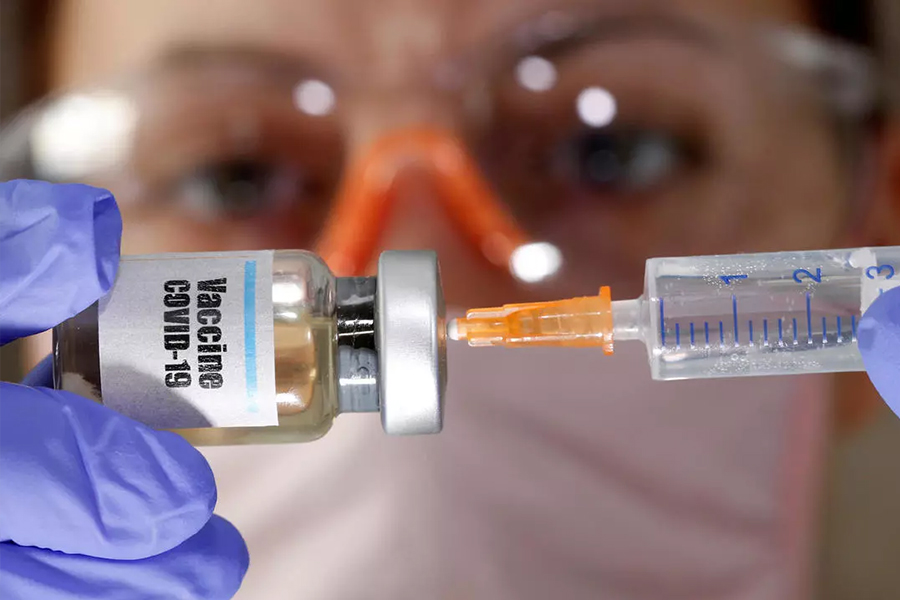

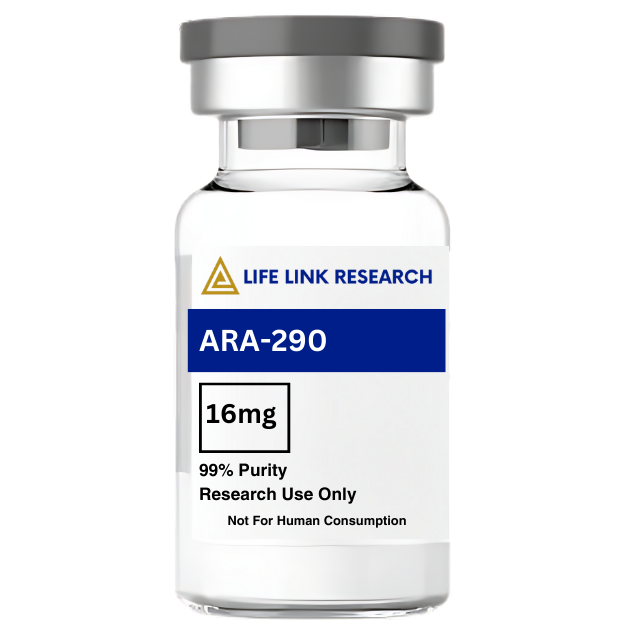
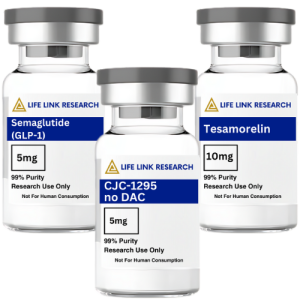

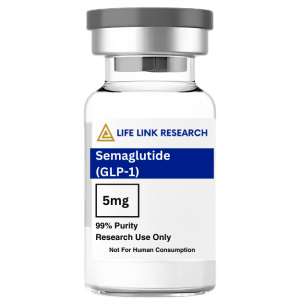
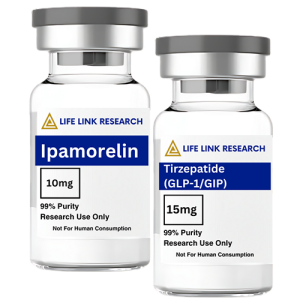
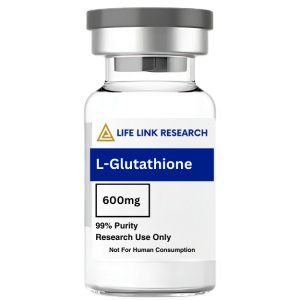
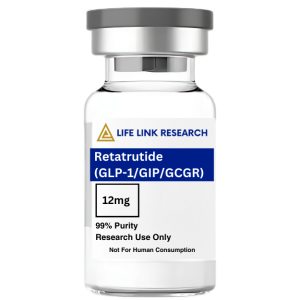


Reviews
There are no reviews yet.